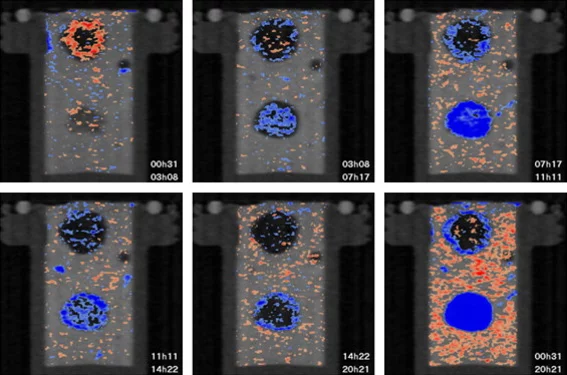Durability of concrete and hence the service life of (reinforced) concrete structures is a critical issue with both economic and ecological impact. The distribution of water (and hence in it dissolved ions) in cementitious materials has a clear relevance for the concrete durability.
Since neutrons are being very predominantly attenuated in cementitious materials by hydrogen (all other elements usually occurring in cementitious materials having significantly lower neutron cross-sections), neutron imaging has been a proven method for visualization/quantification of water transport/content.
Number of topics are including (but not limited to) the moisture transport in uncracked/cracked/carbonated/3D-printed concrete, internal/external curing, self-healing, damage/deterioration due to fire/freeze-thaw/corrosion and rebar corrosion.
Examples of publications
1. Zhang, P, Wittmann F.H., Zhao T., Lehmann E.H., Physica B (2010)
2. Trtik P., Münch B., Weiss W.J., Kaestner A., Jerjen I., josic L., Lehmann E.H., Lura P., Nucl. Instrum. Meth. A(2011)
3. Van der Putten J., Azima M., Van den Heede P., Van Mullem T., Snoeck D., Carminati C., Hovind J., Trtik P., De Schutter G., Van Tittelboom K., Constr & Build Mater. (2020)
Collaboration
- Insititute for Building Materials (IfB), ETH Zürich, Switzerland


